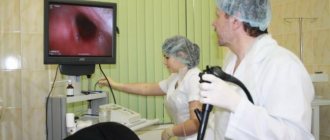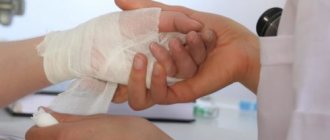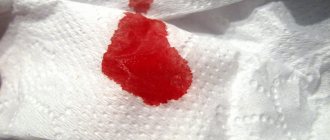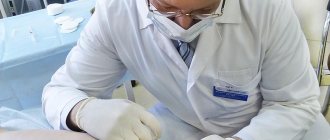Bleeding is divided into types according to the damaged vessel and is distinguished:
· Arterial, which occurs when an artery is damaged and is characterized by a pulsating and flowing outflow of scarlet blood
· Venous, characterized by a smooth flow of blood of a dark red color, occurring with deep tissue damage
Capillary or scarlet bleeding throughout the wound, which is observed when small vessels are damaged
· Parenchymal, characteristic of injury to the liver, spleen or lung. With such bleeding, scarlet and dark red blood is released simultaneously throughout the wound
· Mixed, which is characterized by a combination of different types of bleeding: capillary and venous, arterial and venous, etc.
Depending on the nature of the damage, external bleeding is also distinguished, that is, flowing outward, and internal, when the bleeding itself is not visible, and the blood flows into the abdominal cavity.
First aid for arterial bleeding
02.04.2020
First aid for arterial bleeding
Bleeding is the flow of blood from blood vessels into organs, tissues, natural cavities of the body or out. The most dangerous to human life and health is external arterial bleeding from the great vessels. His life often depends on the correctness and speed of providing first aid to the victim.
Arterial bleeding is characterized by the rapid flow of bright scarlet blood, which usually comes from the wound in a stream or in spurts. Unlike arterial bleeding, bleeding from a vein is characterized by a slow flow of dark venous blood; pulsation of the stream is not typical.
The first and most accessible method of temporarily stopping bleeding is digital pressure of the large arterial trunk to the underlying bone. This method is easily applicable for self- and mutual help. On the extremities the vessels are pressed above the wound, on the neck and head - below the wound.
Another effective method of temporarily stopping arterial bleeding in case of damage to the vessels of the extremities is maximum flexion in the overlying joint. For example, as shown in the figure below, if there is a wound in the forearm area, the victim needs to place a tight roller made of available fabric (clothing) into the elbow fossa and fix the joint in a maximally bent position with a waist belt or strip of material. To stop bleeding on the lower leg, the leg is bent at the knee joint as much as possible; in case of bleeding at the thigh level, the limb is bent at the hip joint.
However, the most effective means of stopping massive arterial bleeding in the limbs is the application of a rubber tourniquet. If you don’t have a tourniquet, you can use the means at hand and stop the bleeding with a twist tourniquet (you will need a strip of fabric, a stick no longer than a standard pencil, and an additional strip of fabric).
Rules for applying a tourniquet (twisting):
- Bleeding is temporarily stopped by digital pressure on the vessel.
- The tourniquet is applied closer to the wound; a pad of clothing or soft tissue (without folds) is placed on the skin at the site where the tourniquet is applied. Do not apply a tourniquet in the area of the middle third of the shoulder and the upper third of the leg (squeezing tissue in this area can lead to irreversible damage to the underlying nerve trunks).
- To ensure the outflow of venous blood, the limb is raised by 20-30 cm
- The tourniquet is grabbed with the right hand at the edge of the left - 30-40 cm closer to the middle
- The tourniquet is stretched by hand and the first circular round is applied so that the initial section of the tourniquet is covered by the next round.
- The correct application of the tourniquet is monitored by the cessation of bleeding from the wound, disappearance of the pulse, sunken veins, and pallor of the skin.
- Without stretching, apply subsequent rounds of the tourniquet to the limb in a spiral and fix it.
- When applying a twist, stretch and apply the fabric to the limb; leave its initial end free. Make several strokes of the fabric (on the shoulder 2-3, on the hip 3-4), applying it under tension, making sure that the fabric is straightened, without lumps or unevenness. Tie the ends of the fabric. Insert a stick under the knot and tighten the bandage until the bleeding stops. Tie a second strip of fabric above the twist and tuck the free end of the stick under it.
- A note is attached to the tourniquet or clothing of the victim indicating the date and time (hours and minutes) of application.
- the tourniquet is not bandaged - it must be clearly visible
- in winter, the limb with a tourniquet applied is well insulated.
The time for bleeding a limb is limited to 2 hours in summer and 1 hour in winter.
Surgeon S.A. Kuzmich, State Healthcare Institution "City Clinic No. 4 of Grodno"
Contacts:
phone: 55-90-01
website:
Efficiency. Professionalism. Mercy
First aid
trauma, bleeding, blood vessels, emergency medical care
In the next issue of “First Aid,” Oleg Nesterov, head of the quality control department for medical care at the Tyumen ambulance station, will tell you how to properly provide emergency care for bleeding.
Types of bleeding: different approaches
There are three types of bleeding: capillary, venous and arterial. How can you distinguish them visually? With capillary bleeding, droplets of blood appear on the surface of the skin. With venous, blood flows in a stream, like from a tap. But the most dangerous, life-threatening bleeding is arterial. Its main symptom, regardless of the color of the blood, is pulsating, in the rhythm of the heartbeat, in jerks. Often, with arterial bleeding, a blood ridge is formed, which can be compared to how geysers shoot out of the ground. But even this bleeding can be stopped.
Stopping methods: holding the wound tightly
There are several methods to stop bleeding. An emergency stop is digital pressure on the vessels in the wound. But it is advisable to somehow protect yourself. The simplest thing is to put any plastic bag on your hand like a glove. With a hand, a fist, or at best, of course, a rolled up bandage, the wound must be pressed down with force until the bleeding stops. And then you can call for help, look for a tourniquet, call an ambulance. It should be noted that clamping a wound is not an easy task; it will take a lot of effort.
Neck – any folded fabric will do for this. We hold the wound tightly. We clamp one artery and leave the trachea free. Bleeding often cannot be completely stopped, but it can at least be slowed down.
There is an artery in the axillary region - you need to feel it with your fingers, then just take the entire inner area of the shoulder and press firmly with your hands to the bone, and below the bleeding will stop.
Under no circumstances should you open your hand from the wound. If you feel tired, you need to either help yourself with your other hand, or ask for help - so that someone else presses on your hands from above.
In case of internal bleeding, the main task is to get the patient as quickly as possible to where there is a surgeon and an operating table. The only thing you can do if there is bleeding in the abdomen is to press hard on it with your fist. Signs of internal bleeding: there is a wound, the person is pale, and has a rapid heartbeat.
Cold stops only capillary bleeding. For arterial blood, cold is useless.
Applying a tourniquet: focusing on blood flow
If the wound is on the neck, where the largest carotid artery is located, then a tourniquet cannot be applied. But you can fix the bandage through the arm opposite to the wound.
The points for applying the tourniquet on the limbs are the middle or lower third of the shoulder. Accordingly, a tourniquet is also applied to the thigh.
When applying any tourniquet, the bleeding should stop!
For wounds on the extremities (pink stickers on the layout indicate bleeding areas), a tourniquet is applied above the wound. When bleeding in the neck and head area, the artery is pinched below the wound. The explanation for this is very simple - arterial blood flow comes from the heart.
The tourniquet is stretched, applied to the limb, the ends are crossed, fixed with a finger and wrapped again with less force. Similarly, bleeding is stopped using a belt and other suitable means at hand.
The biggest mistake is when a tourniquet is applied for venous bleeding (although it would be enough to apply a tight bandage), but they do it weakly; as a result, the blood flow not only does not slow down, but becomes stronger. Important: when applying any tourniquet, the bleeding must stop! It is this sign that indicates that the rescue actions were completed correctly.
After 15 minutes, loosen the tourniquet without removing the first round, and when bleeding resumes, tighten it again. During this time, it is guaranteed that necrosis of the limb tissue will not occur.
Another way to apply a tourniquet is twisting. You need a tourniquet (thin scarf, bandage, lace, any elastic fabric, etc.) no less than the length of your arm. But someone else must run for the rope and stick, since the wound of the victim cannot be let go for a second. We wrap the tourniquet around the limb twice, tie a knot, tighten it, leaving the finger under the bandage. Then insert a pencil or similar object under the top of the bandage and twist it until the bleeding stops. Once the bleeding has stopped, the pencil should be securely fastened.
Elena SIDOROVA, specially for 72.ru
First aid
For arterial bleeding
If an artery is damaged, the bleeding is rapid, so you cannot hesitate. After quickly assessing the victim’s condition, measures must be taken to temporarily stop the bleeding. First, the artery is pinched with a finger; for this, certain points are used:
- If there is bleeding in the face, press the corner of the lower jaw with your thumb.
- In case of bleeding from the head, press on the area of the temporal bone in front of the ear.
- In case of arterial bleeding in the area of the shoulder joint, press the subclavian artery to the rib.
- If the hand is damaged, press the brachial artery to the bone from the side of the shoulder.
- If the integrity of the femoral artery is compromised, press with your fist on the pubic bone in the groin area.
First aid for arterial bleeding
After finger pressure, a tourniquet is applied in compliance with the rules described above. If you don’t have a tourniquet or similar material at hand, you can apply a twist. To do this, use a piece of twine or fabric. A loop is made from the material and placed on the desired area of the limb. A metal or wooden rod is inserted into the loop, with the help of which the bandage is twisted. Further actions are the same as when stopping bleeding using a tourniquet.
For venous bleeding
In most cases, it is easier to stop bleeding from a vein than from an artery, so neither a tourniquet nor a twist is practically used.
The algorithm for providing first aid is as follows:
- The wound is covered with several layers of bandage, napkins or any clean piece of fabric.
- Sterile cotton wool is placed on top.
- Fix everything tightly with a bandage, scarf or piece of fabric of the required width.
To consolidate the effect, the damaged limb is raised so that it is higher than the body and fixed. If it is not possible to apply a bandage, the wound is packed with a tightly rolled bandage. Sometimes this is enough to stop the bleeding.
If there is severe bleeding from a vein, a pressure bandage may be useless. In this case, you need to apply a tourniquet and apply an ice pack to the wound. After this, the victim must be taken to the nearest hospital.
For capillary bleeding
In most cases, capillary bleeding does not pose a threat to the life of the victim and, if first aid measures were correct, does not cause complications.
To stop bleeding during external bleeding, you must adhere to the following sequence:
- Treat the skin area with any antiseptic.
- Apply a napkin and secure it with a bandage;
- If a limb is injured, raise it relative to the body.
With various injuries or diseases, nosebleeds may begin. It occurs in case of damage to the blood vessels located in the mucous membrane; it can stop on its own, but in severe cases, first-aid treatment will be required.
First of all, you need to press the wing of the nose to the nasal septum. For minor damage to blood vessels, the bleeding should stop after 10 minutes. If this does not happen, a nasal tamponade is performed. In case of nosebleeds, you need to monitor the well-being of the victim and warn him that he needs to breathe through his mouth.
First aid for types of bleeding
How to apply a tourniquet: technique and rules
If heavy bleeding occurs, you need to act quickly, assessing the possible risks. The process of applying a tourniquet is performed according to the following scheme:
- Assessment of the type of bleeding - for venous bleeding, the tourniquet is applied below the wound site by 5-7 cm, for arterial bleeding - higher. The type of bleeding can be recognized by the color of the blood and the nature of its flow from the wound.
- Pressing the vessel with your hand above the wound site - this manipulation allows you to slow down the bleeding until you find the means to apply a pressure bandage.
- Application of a tourniquet, taking into account the type of bleeding - the tourniquet is tightly tightened on the skin, having previously wrapped it in cloth.
- Treatment of the wound - the wound site should be treated after applying a tourniquet. To do this, wash with water or hydrogen peroxide. A sterile dressing is applied to the wound, which minimizes the risk of pathogenic microorganisms entering the circulatory system.
- Indicating the time of application of the tourniquet - using a pen, pencil or any available means on clothing, paper or the body itself, make a record of exactly when the tourniquet is applied. This will allow us to further assess the extent of the damage and the method of further action to save the victim.
Before applying a tourniquet, you need to assess the type of bleeding.
In parallel with applying the tourniquet, you should call emergency help. It is good if the manipulations are performed with 4 hands, since the life and further state of health of the victim directly depends on the speed and correctness of first aid.
In the case of damage to the carotid artery located in the neck, a tourniquet is applied through the opposite arm around the neck.
If the tourniquet is applied correctly, the bleeding will stop immediately. Minor bruising and bleeding from the wound are acceptable, since it is impossible to completely compress the damaged vessel.
Important: Use of antibiotics for purulent wounds
If the tourniquet is applied incorrectly, the following clinical manifestations persist:
- bleeding does not stop;
- the pinched area of the body loses sensitivity and mobility;
- cyanosis of the skin and hyperemia in the area of the wound and the site of application of the tourniquet.
With rapid blood loss, the patient's condition constantly worsens. This is accompanied by loss of consciousness, pallor of the skin, nausea, ringing in the ears, disruption of vital functions, even death. The pulse becomes thread-like and difficult to palpate. In this case, resuscitation care is provided, aimed at maintaining vital processes.
Methods for temporarily stopping external bleeding
1. Apply direct pressure to the wound.
2. Apply a pressure bandage. Cover the wound with several folded napkins or several tightly folded layers of gauze. Bandage the top tightly. If the bandage gets wet, place a few more tightly folded tissues on top of it and press firmly with your palm over the bandage.
3. If a pressure bandage and direct pressure on the wound are ineffective or arterial bleeding from a large artery (femoral, brachial) was immediately detected, apply digital pressure to the artery. It should be pressed firmly with your fingers or fist against nearby bone formations until the bleeding stops.
Before applying a tourniquet, do not release the pinched artery so that bleeding does not resume. If you start to get tired, ask someone present to press your fingers on top.
4. Pressure points of the arteries:
5. A tourniquet is an extreme measure to temporarily stop arterial bleeding!
Apply a hemostatic tourniquet.
It is applied to a soft pad (an element of the victim’s clothing) above the wound and as close to it as possible.
6. Place the tourniquet under the limb and stretch.
Tighten the first turn of the tourniquet and make sure that the bleeding from the wound has stopped.
A tourniquet is an extreme measure to temporarily stop arterial bleeding!
7. Apply subsequent turns of the tourniquet with less force in an ascending spiral, capturing the previous turn approximately halfway.
8. Place a note under the tourniquet indicating the date and exact time of application. Do not cover the tourniquet with a bandage or splint! In summer, the tourniquet can be held for 1 hour, in winter - 30 minutes.
If the maximum tourniquet application time has expired and medical assistance is not available, do the following:
1. Use your fingers to press the artery above the tourniquet.
2. Remove the tourniquet for 15 minutes.
3. If possible, massage the limb.
4. Apply a tourniquet slightly above the previous application site (if possible).
5. The maximum reapplication time is 15 minutes.
9. If there is severe bleeding in the joint area (for example, the groin), use the method of maximum flexion of the limb. Place some bandages or rolled up clothing in the joint area and bend the limb. Secure the limb in a bent position with your hands, a few turns of a bandage, or using improvised means.
10. If there is significant blood loss, place the victim with his legs elevated.
Using improvised means
If you don’t have a medical tourniquet at hand, you can use any available material. First aid for arterial bleeding of a limb can be provided with a tie or belt, a bandage or belt from clothes, a rubber tube or a scarf, but this should not be done with wire or thin twine.
If you use fabric, then you need to adjust the twist for tightening, as in the figure above in the article. Be sure to ensure that when twisting the fabric, no skin gets between the layers of fabric or bandage.
- First aid for arterial bleeding: technique of applying a tourniquet and sterile dressing
Application of a tourniquet
Everyone should know how to apply a tourniquet for arterial bleeding. You never know when the knowledge you gain will come in handy. Arterial bleeding is dangerous for the patient’s life; if help is not provided in a timely manner, he will die. This is the most dangerous injury. Blood flows from the wound like a fountain, it is impossible to confuse it with another type of bleeding.
Bleeding. Types of bleeding. Methods to stop bleeding
Bleeding is the leakage of blood from blood vessels, most often occurring as a result of their damage. In this case, we are talking about traumatic bleeding (Training to stop traumatic bleeding is usually carried out on Maxim medical mannequin simulators, using pads that simulate various wounds and lesions, bleeding). Bleeding can also occur when a vessel is corroded by a painful lesion (tuberculosis, cancer, ulcer). Thus, non-traumatic bleeding occurs.
Traumatic bleeding is one of the main signs of every wound. A blow, cut, or injection breaks the walls of blood vessels, causing blood to flow out of them. Blood clotting. Blood has an important protective property - clotting; Thanks to the ability of blood to clot, any small, mainly capillary bleeding spontaneously stops. A clot of coagulated blood clogs the opening of the vessel caused by injury. In some cases, bleeding stops as a result of compression of the vessel.
Bleeding. With insufficient coagulation, manifested by disproportionately long, slow coagulation, bleeding occurs. Persons suffering from this disease can lose a significant amount of blood through bleeding from small vessels, small wounds, and even death can occur.
Consequences of bleeding. In case of bleeding, the main danger is associated with the occurrence of acute insufficient blood supply to tissues, blood loss, which, causing an insufficient supply of oxygen to organs, causes disruption of their activity; First of all, this concerns the brain, heart and lungs.
Types of bleeding.
Bleeding in which blood flows out from a wound or natural orifices of the body is usually called external bleeding. Bleeding in which blood accumulates in body cavities is called internal bleeding. External bleeding is divided into:
- Capillary - occurs with superficial wounds; blood flows out drop by drop from the wound;
- Venous - occurs with deeper wounds, such as cuts or stabs; with this type of bleeding, there is a profuse flow of dark red blood;
- Arterial - occurs with deep chopped, puncture wounds; arterial blood of a bright red color spurts from damaged arteries, in which it is under high pressure;
- Mixed bleeding occurs when veins and arteries bleed simultaneously in a wound.
STOPPING CAPILLARY AND VENOUS BLEEDING
The first goal when treating any significantly bleeding wound is to stop the bleeding. In this case, you should act quickly and purposefully, since significant blood loss during injury weakens the victim and even poses a threat to his life. If it is possible to prevent large blood loss, this will greatly facilitate the treatment of the wound and special treatment of the victim, and will reduce the consequences of injury and injury.
STOPING CAPILLARY BLEEDING
With capillary bleeding, blood loss is relatively small. This bleeding can be quickly stopped by placing clean gauze over the bleeding area. A layer of cotton wool is placed on top of the gauze and the wound is bandaged. If you have no gauze or bandage at your disposal, you can bandage the bleeding area with a clean handkerchief. It is impossible to apply shaggy fabric directly to the wound, since its villi contain a large number of bacteria that cause infection of the wound. For the same reason, cotton wool should not be applied directly to an open wound.
STOPPING VENOUS BLEEDING
A dangerous aspect of venous bleeding, along with a significant amount of lost blood, is that when the veins are wounded, especially the cervical ones, air can be sucked into the vessels through the areas damaged by the wounds. The air that has entered the vessel can then enter the heart. In such cases, a fatal condition occurs - air embolism.
Venous bleeding is best controlled with a pressure bandage. Apply clean gauze to the bleeding area, on top of it an unrolled bandage or gauze folded several times, or, in extreme cases, a folded clean handkerchief. Means used in this way act as a pressure factor that presses the gaping ends of damaged vessels. When such a pressing object is pressed against the wound with a bandage, the lumens of the blood vessels are compressed and the bleeding stops.
If the person providing assistance does not have a pressure bandage at hand, and the victim is bleeding heavily from a damaged vein, then the bleeding area should be immediately pressed with your fingers. When bleeding from a vein of the upper limb, in some cases it is enough to simply raise your hand up. In both cases, a pressure bandage should be applied to the wound after this.
The most convenient for these purposes is a pocket pressure bandage, an individual package that is sold in pharmacies.
STOPPING ARTERIAL BLEEDING
Arterial bleeding is the most dangerous of all types of bleeding, since it can quickly lead to complete bleeding of the victim.
Arterial bleeding can be stopped with a pressure bandage. If there is bleeding from a large artery, you should immediately stop the blood flow to the damaged area by pressing the artery with your finger above the wound site. However, this measure is only temporary. The artery is pressed with a finger until a pressure bandage is prepared and applied.
When bleeding from the femoral artery, applying a pressure bandage alone is sometimes insufficient. In such cases, you have to apply a loop, a tourniquet, or an improvised tourniquet.
If the person providing assistance does not have a standard loop or tourniquet at hand, then instead you can use a scarf, handkerchief, tie, or suspenders. A tourniquet or loop is placed on the limb immediately above the bleeding site. For these purposes, a pocket bandage (individual package) is very convenient, acting simultaneously as both a covering and a pressure bandage. The area where the tourniquet or loop is applied is covered with a layer of gauze to avoid damaging the skin and nerves. The applied tourniquet completely stops the flow of blood into the limb, but if the loop or tourniquet is left on the limb for a long time, it may even die. Therefore, to stop bleeding, they are used only in exceptional cases, namely on the shoulder and thigh (when part of a limb is torn off, during amputations).
When a loop or tourniquet is applied, the victim must be taken to a medical facility for special surgical treatment within two hours.
Bleeding of the upper limb can be stopped with a bag of bandage placed in the elbow or armpit, while simultaneously tightening the limb with a tourniquet. In case of bleeding of the lower limb, proceed in a similar way, placing a wedge in the popliteal fossa. True, this method of stopping bleeding is used only occasionally.
If there is bleeding from the main cervical artery - the carotid artery - you should immediately compress the wound with your fingers or fist; After this, the wound is stuffed with a large amount of clean gauze. This method of stopping bleeding is called packing.
After bandaging (using an IPP-1 dressing package) of the bleeding vessels, the victim should be given some non-alcoholic drinks and taken to a medical facility as soon as possible.
INTERNAL BLEEDING
Bleeding into the abdominal cavity. This type of bleeding occurs when there is a blow to the stomach; in most cases, rupture of the liver and spleen is observed. In women, intra-abdominal bleeding occurs during ectopic pregnancy. Intra-abdominal bleeding is characterized by severe bleeding and pain in the abdominal area. The victim falls into a state of shock or loses consciousness. He is placed in a semi-sitting position with his knees bent, and a cold compress is placed on the abdominal area. The victim should not be given anything to drink or eat. It is necessary to ensure his immediate transportation to a medical facility.
Bleeding into the pleural cavity. This type of bleeding occurs when there is a blow or injury to the chest. Blood accumulates in the pleural cavity and in the affected half compresses the lungs, thereby preventing their normal activity. The victim breathes with difficulty, and with significant bleeding even suffocates. He is placed in a sitting position on the floor with his lower limbs bent, and a cold compress is placed on his chest. It is necessary to ensure immediate transportation of the victim to a medical facility.
ACUTE ANANAMIUM DUE TO BLOOD LOSS
Acute anemia occurs when the body loses a significant amount of blood. The loss of even one and a half liters of blood poses a great danger to the life of the victim.
In acute anemia, the victim complains of weakness, pallor, sunken eyes, a weak and rapid pulse, the patient looks haggard, apathetic, and cold sweat appears on his forehead. Sometimes involuntary urination and stool leakage occurs. In short, shock occurs due to acute anemia caused by loss of blood. Finally the victim collapses and loses consciousness.
WHAT HAPPENS IN THE HUMAN BODY DURING SIGNIFICANT BLOOD LOSS?
As a result of a decrease in blood volume in the circulatory system, the body's organs suffer due to insufficient oxygen supply to the body; Most of all, this affects brain activity and general metabolism. Despite a number of adaptive protective mechanisms, the brain and hormonal system are not able to balance the pathological changes occurring in the body. If in this phase the victim is not provided with appropriate assistance, then as a result of paralysis of the respiratory and circulatory centers located in the medulla oblongata due to lack of oxygen, the patient’s death occurs.
First aid. A patient who has lost a significant amount of blood can be saved, but this requires urgent first aid measures. First of all, it is necessary to stop the bleeding, if it has not yet stopped spontaneously as a result of loss of vascular tone, which is observed with significant blood loss. Even if the bleeding has stopped, a pressure bandage should still be applied to the wound. Then the victim’s dress and collar are unbuttoned; If consciousness is maintained and there are no injuries to the digestive tract, the patient should be given tea. Giving black coffee in such cases is not recommended. Then the victim is placed on his back with his head slightly lowered, his arms and legs are raised and even suspended. This position promotes blood supply to the brain and thereby supports its activity. After this, the victim must be urgently transported to a medical facility.











